Out in the aviation world, there are a few different people who always take the blame for anything airline-related. If you are inside the terminal, the customer service staff always take the brunt of any little problem. If it’s onboard the aircraft, the blame is given to the flight attendants. But if something happens to your checked baggage, then all the blame is placed squarely on the ramp agent (more commonly known as a ’œramper’).
I was a ramp agent, and I can tell you right now that sometimes that blame should not come to me. Sure, there are times that they should take the blame, but not always. Working the ramp is not an easy job, and I am going to debunk a couple of myths that surround life under the wing.
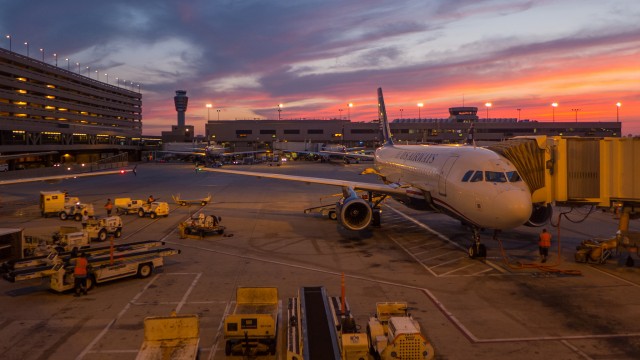
At the end of the night, all the equipment is packed up and put to bed – Photo: Flickr CC | Ed Suominen
Working on the ramp isn’t easy, and can be quite dramatic. Passengers either look out from the terminal or airplane window and think that all that the rampers do is throw a few bags around. Well, that is far from the truth. Sure, there is plenty of down time, even in big hub stations, but the work that is done can be quite demanding.
One of the myths is that rampers make okay money. Well, that depends. Many ramp agents are non-union and work long hours for what can often be minimum wage. Think that there is extra pay for working nights or weekends’¦ hah!
The only time you get extra is when it is overtime, and luckily, due to lack of people, there is ALWAYS plenty of overtime to go around.
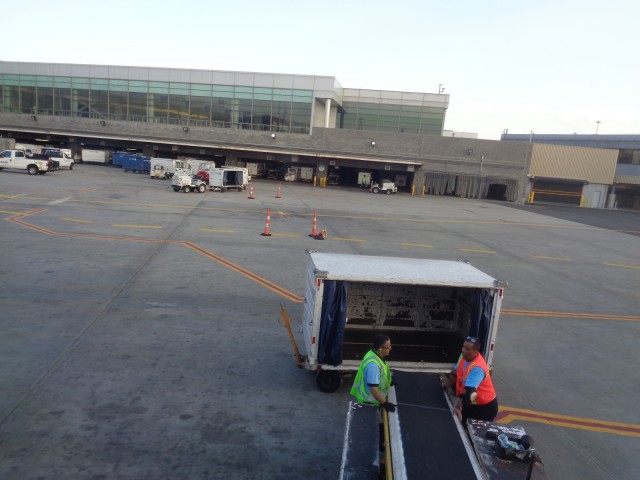
A common scene around an airport. Ramp Workers waiting… waiting… more waiting – Photo: AirlineReporter
Another myth is that it must be fun to be working around planes all day long. Sure, as an AvGeek, I did enjoy looking at planes, however it’s not always fun and games. Most of those planes on the ground, to a ramper, are either things that they need to be working on or something that is out to kill them.
BONUS: Ramp Operations ’“ What’s Going on Out There?
One of my favorite jobs on the ramp was to be the chocks agent. My job was to be the first person to touch the plane, once it arrived. However, the scariest part of that job is standing right under the jet bridge, looking down the barrel of an engine spinning at high speed. The first thought through your head is, ’œI sure hope I don’t get sucked into that spinning engine.’ Although it has been rare for a person to end up in an engine (and it should be less), other objects would end up in them more often.
There is another myth that every ramper is as strong as an ox — you know, from throwing those bags around all day. Well that sure as hell ain’t true. Not all ramp agents are throwing bags around, so there is a mixture of people.
For a narrowbody aircraft, like the 737, we worked as a crew of four, with two inside the aircraft and two outside. Generally only one of those two was actually having to throw bags. The other person was stacking inside the cargo compartment (commonly referred to as ’œthe pit’) while the other two were loading the conveyor belt.
I had my time throwing those bags, but I would do that over stacking any day of the week. That doesn’t mean to say I liked throwing bags (or boxes for that matter), just that I would do it because my stacking skills were atrocious.
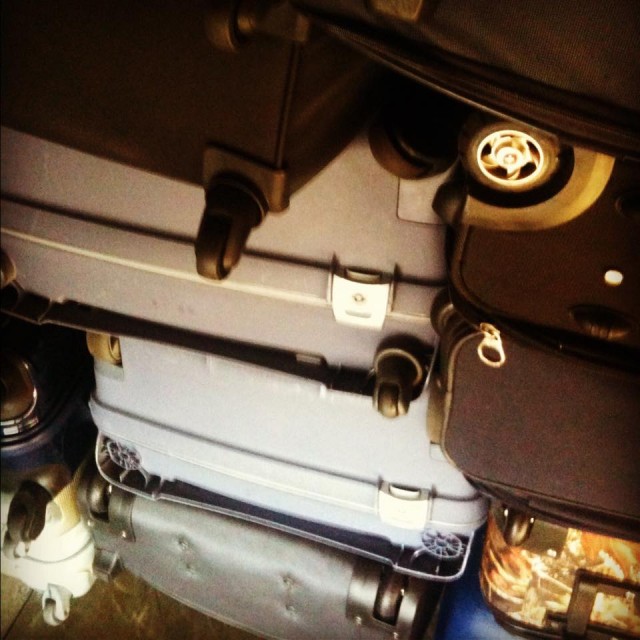
This may look like a good stack, but handles are in and there are no tags. Bad Ramper! Photo: AirlineReporter
Throwing bags around though is the where we come to the biggest myth of them all. We have all seen videos or watched it out the window ourselves; rampers carelessly throwing bags. Many feel this is the main reason why bags get broken. Yes, some do, but there are many other people and machines that touch your bag before the ramper even sees it.
Inside the airport, where the bags are collected, scanned, and sent on their way to the carts is a giant set of conveyor belts that move continuously. When your bag passes through a point and it reads the bag tag barcode and the computer says, ’œthis is your flight, time to get off,’ a giant arm punches the bag off the belt onto the piers where the bags are collected.
This giant arm (funnily enough, called the puncher) is what will break your bag. It has to push the bag off the belt onto the pier and do it fast enough that it doesn’t get stuck or make it past the required point. It is pretty violent, and one of the things you do not want to get your body near. So, don’t go blaming the ramper for your precious luggage being broken; it probably happened well before it made it to the plane.
Now. That being said, I should probably admit that the first bag I touched on the ramp — I ripped the whole bottom off. Sorry!
When it is wet on the ramp, life is miserable. You are soaked, everything is metal around you, so it is slippery and once you get wet, generally you stay wet. Try pushing panels open or closed on an aircraft with wet gloves or wet hands. So not fun!
But, when the sun is out, life is just as bad. Now you have the sun trying to turn you into a lobster, the airport is nothing but tarmac, so it is hot and baking on the ground and it reflects easily.
The last myth is, ’œyou only have to move my suitcase a short distance, it can’t be that hard.’ Sure, there are light suitcases, like the ones that are carried onboard and they can be easy to move.
However, in general, what you are checking is never small, nor light. The average weight of a checked bag is around 50 lbs. That is NOT simple to move at all, and those are the easy bags.
You get to see some interesting bags as they come off a plane. Golf bags, bike boxes, gun cases, and then there is the cargo. So much cargo. Cargo is a major part of how airlines make their money, and with that much cargo, things can get complicated.
These essential items (often called AOG, for Aircraft on Ground) are generally being shipped because a plane needs to be fixed. They have priority over everything else (even your precious suitcase). Many a time I have seen a cargo manifest that read “AOG” and I shuddered thinking what it could be — the worst are aircraft wheels.
Even small aircraft wheels are not easy to move around. A main landing gear for a 737 takes two-to-three workers to move. Imagine a main gear for a 777 or an A380 — pass!
So now that you have read some of the truths about life on the ramp, what can you do about it to make sure your items get from A-B without a hassle? Don’t even think that a fragile sticker or label on your bag will get you special treatment. It won’t.
Also get rid of all those dangling labels, strings, or tags on your bag. These are the items that will surely get jammed in a conveyor belt and cause them to be broken off. If it does get jammed and the conveyor doesn’t rip it off, sure as hell a ramper will “unjam” your bag.
One thing you can also do is have patience. The rampers are doing their best to get your bag to you as quickly as possible. They want to make sure that they are making their targets (since generally, airlines put a target on how long bags have to take to get on or off a plane) and they want to make sure they are doing it as safely as possible.
Life on the ramp isn’t easy; there are a lot of things that want to kill or hurt you (and that includes the passengers, sometimes). So if you are looking out your window and see a ramper — give them a smile and a wave. You never know, it might make their day.
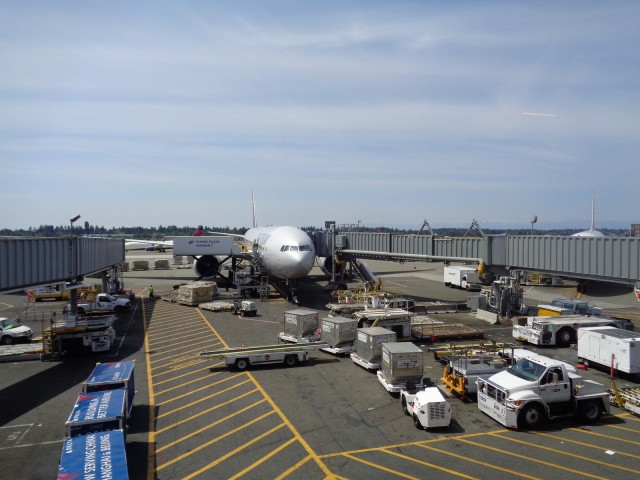
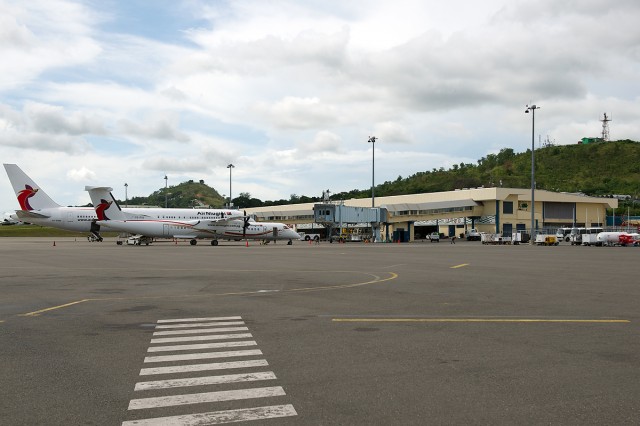
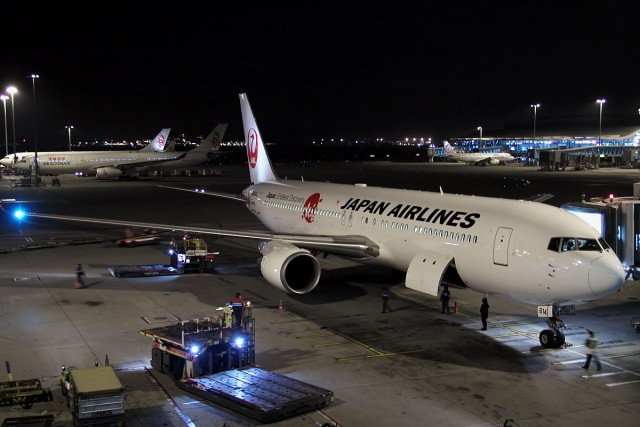
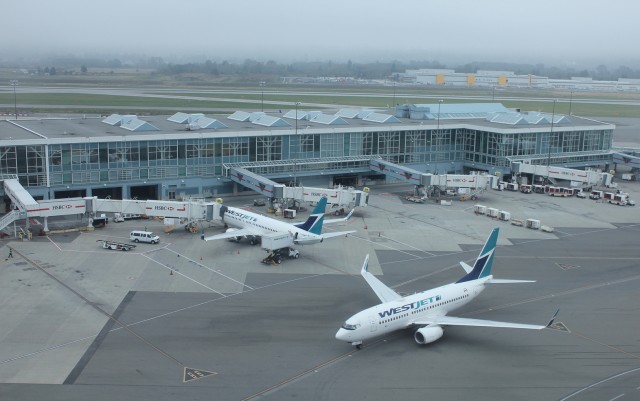
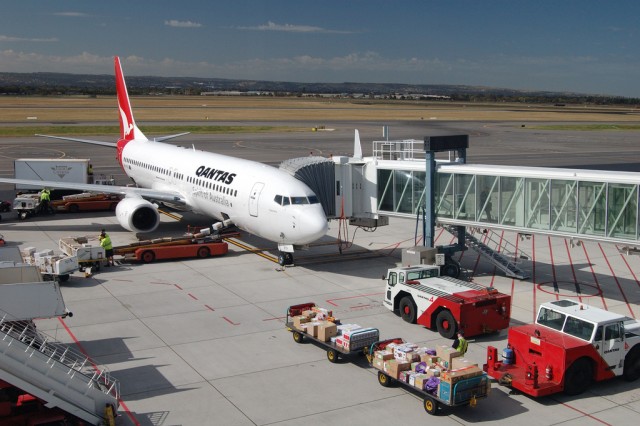
I am a ramper at Seatac and my company services KE. I think I can tell that day was one of our easier days because KE is on S12
So, it isn’t as fun as it looks, and I won’t get chiseled abs from the job? That’s disappointing!
I always feel for the rampers on -30 degree days, +30 degree days, rainy days, windy days… I guess that is pretty well 80% of days.
…still looks like a cool job, but I’ll stick to my office gig
Thanks for the fun article!
It’s always fun to load 120+ bags and then have to crawl through the bins looking for bags to pull/reroute thanks to a weather/mx delay causing those people to miss their connection. And James the only ripping you’ll be doing is to your muscles and ligaments ha ha
Actually Judge, that is how muscles are built up, but constantly being slightly ripped, then heal, rip, heal, etc…
Do not forget the 20 gate check bags off the jetbridge you have to get and they still want a ontime dept.
I have done ramp, everything from bags, cargo, Comat etc, cleaned the inside, dumped lavs, and filled the water tanks. When I retired I was doing Catering and Commissary. Why?? much less hard work. instead of 8 hrs on the ramp its more like 3 or 4 outdoors, then its back to commissary and indoors. You have to start someplace.
I loved this read. But even with all this hard work, I must say, I would take ramp line over customer service life any day! Just wish I hadn’t got an SI injury from lifting a person’s 50+lbs bag in the scorching heat.
Nothing beats working a minimum ground time 757turn in PHX with a 200off/160 on +cargo in the summer when its 115°ambiant and 130°measured at 1030AM…whoooooooweeeee that’s real fun right there!!!
Work at a regional airport and a ramper’s job is double tough. The major airlines outsource to the likes of DGS where it’s a minimum wage job, no benefits and you are basically worked to death. The turnover is horrendous One co-worker of mine says he has a 2 weeks rule. He basically doesn’t even ask their name for two weeks to see if they will last!
Unlike at mainline stations we have to do everything, bag room, in the pits, belt loader, set up the ramp, bag drop, as well as actually getting the planes in and out.
Currently at my station we have 3 rampers, doing 6 flights, from 6am- 9:30 a mix of A320, CRJ 700, 200’s and ERJ-175 at Then we just prepare for the next onslaught.
Any passenger want to complain! Walk in my shoes for a day